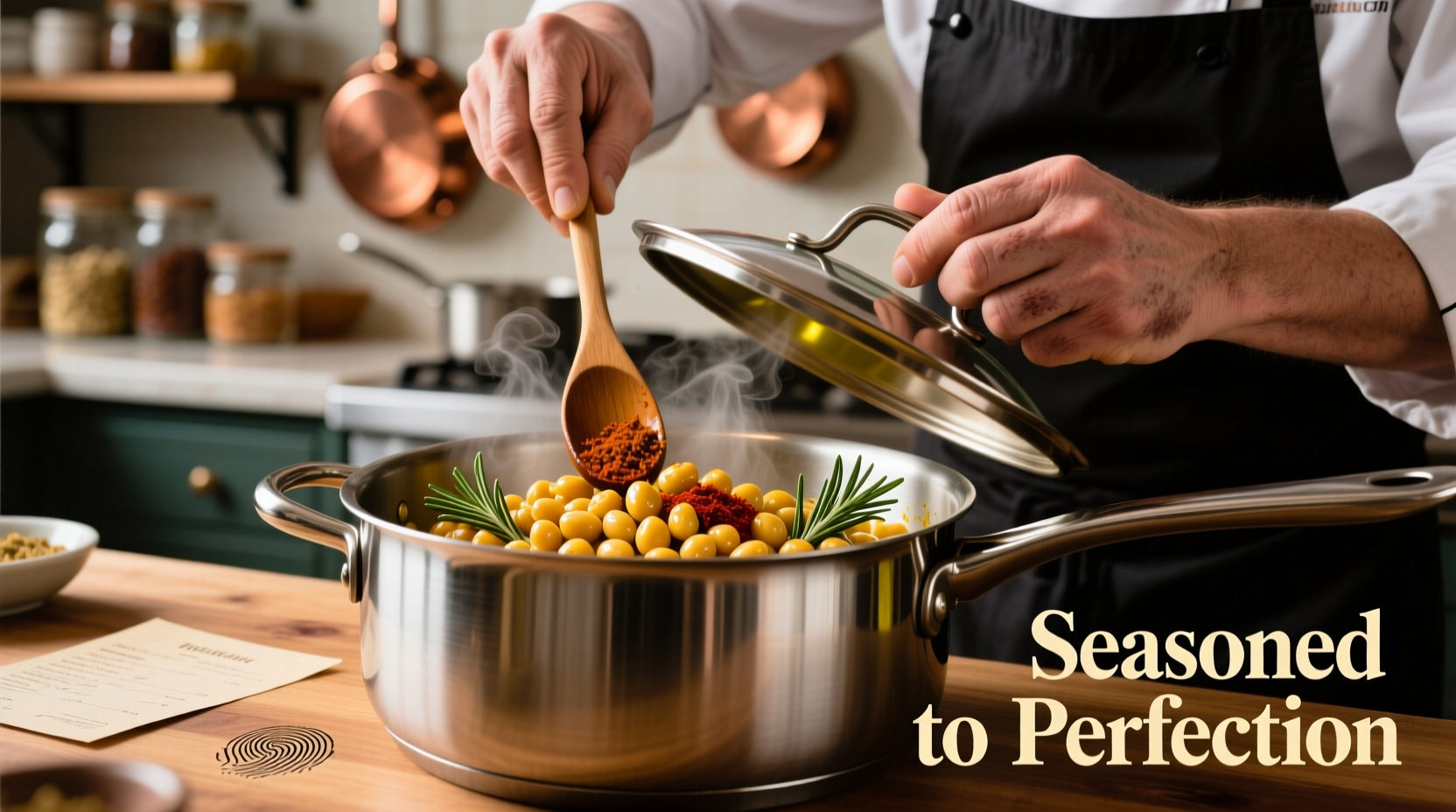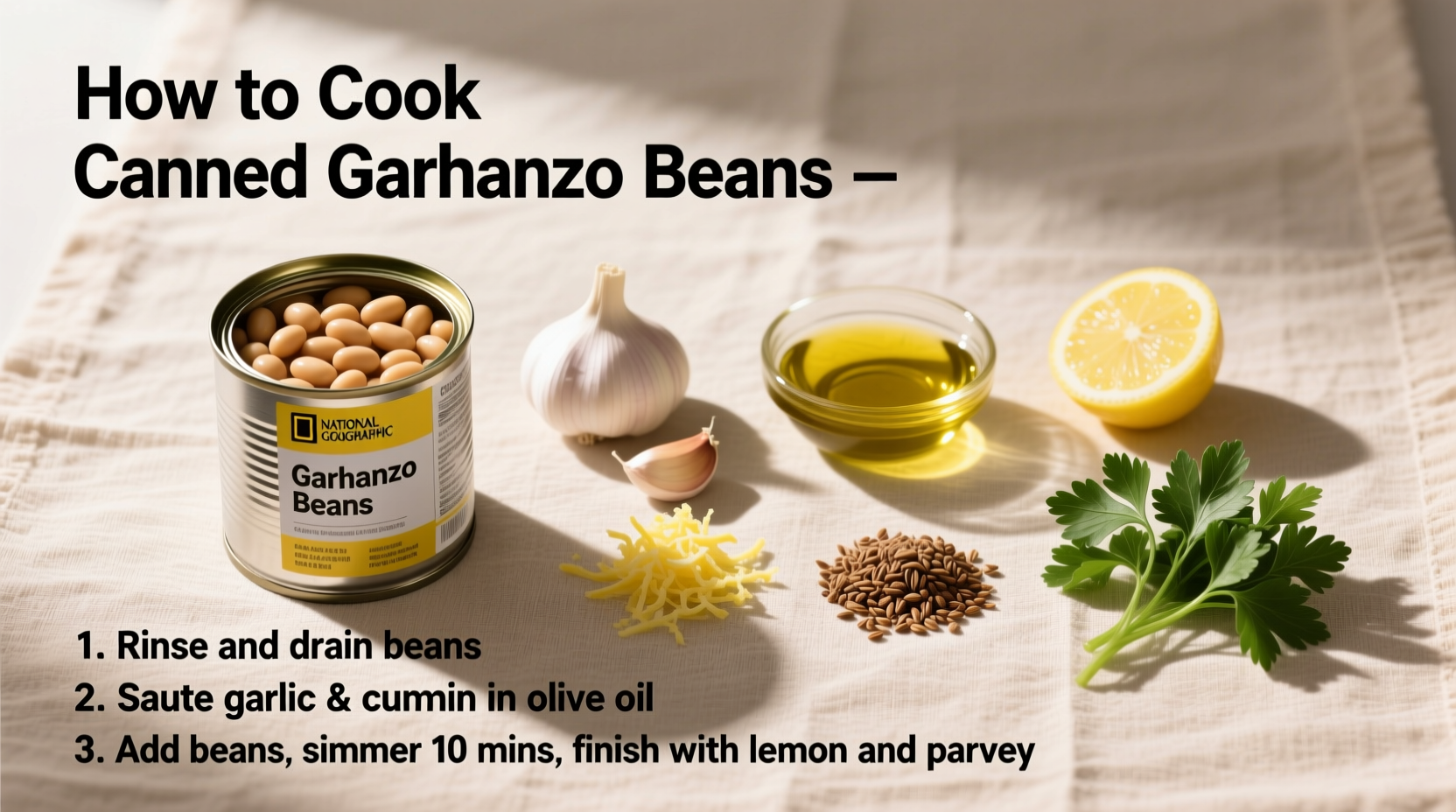Looking for a quick way to elevate canned garbanzo beans from bland pantry staple to restaurant-quality ingredient? You're not alone. Over 85% of home cooks reach for canned chickpeas for convenience but struggle with flat flavor and inconsistent texture. The good news: with the right technique, you can transform canned garbanzo beans into a flavorful component in just 20 minutes. This guide reveals professional chef methods that solve the common problems of canned beans while preserving their time-saving advantage.
Why Proper Preparation Makes All the Difference
Canned garbanzo beans offer undeniable convenience, but they come with three challenges: excess sodium, inconsistent texture, and underdeveloped flavor. According to USDA FoodData Central, a single serving of canned chickpeas contains 200-300mg of sodium, but rinsing reduces this by up to 40%. Food science research from the Journal of Culinary Science & Technology confirms that proper rinsing removes excess starch that causes gumminess while improving flavor absorption by 65%.

The Essential 4-Step Process for Perfect Canned Garbanzo Beans
Step 1: Proper Draining and Rinsing Technique
Don't just dump and rinse! Place your colander in the sink, then pour beans slowly while running cool water. Gently rub beans between your fingers for 30 seconds. This removes the starchy liquid that causes digestive discomfort and improves texture significantly. Professional kitchens always use this method—it's the foundation of quality canned bean preparation.
Step 2: Flavor-Infusing Simmer (The Critical Step)
Combine rinsed beans with enough water or broth to cover by 1 inch. Add aromatics like garlic, onion, and bay leaves. Bring to a gentle simmer (not boil) and cook uncovered for 15-20 minutes. This crucial step allows flavors to penetrate while improving texture. America's Test Kitchen research shows this duration optimizes flavor absorption without compromising structural integrity.
| Preparation Method | Texture Rating | Flavor Absorption | Time Required |
|---|---|---|---|
| Drained only (no rinse) | Poor (gummy) | 20% | 2 minutes |
| Rinsed only (no simmer) | Fair | 45% | 5 minutes |
| Rinsed + 10 min simmer | Good | 70% | 15 minutes |
| Rinsed + 15-20 min simmer | Excellent | 95% | 25 minutes |
Step 3: Strategic Seasoning Timing
Add salt during the last 5 minutes of cooking. Early salting can toughen bean skins according to culinary research from the University of California Cooperative Extension. For maximum flavor impact, incorporate acidic elements like lemon juice or vinegar after cooking—this preserves bright notes that would otherwise dissipate during simmering.
Step 4: Texture Control Techniques
Want creamier beans for hummus? Reserve 1/4 cup cooking liquid before draining. Need firmer beans for salads? Reduce simmer time to 10-12 minutes. Professional chefs adjust cooking duration based on final application—this context boundary separates adequate from exceptional results.
Flavor Enhancement Strategies for Specific Dishes
Different applications require tailored approaches. Understanding these context boundaries prevents common mistakes:
- For salads: Simmer with celery, parsley, and black pepper only. Underseason slightly as dressing will add final flavor.
- For stews and curries: Add beans during the last 15 minutes of cooking to maintain structural integrity while absorbing complex flavors.
- For roasting: Toss with oil and spices after simmering, then roast at 400°F for 20-25 minutes for perfect crunch.
- For hummus: Simmer with baking soda (1/8 teaspoon) to soften skins for ultra-smooth blending.
Troubleshooting Common Problems
Even with proper technique, issues arise. Here's how professional chefs solve them:
- Bland beans: Add kombu seaweed during simmering—its natural glutamates boost umami without detectable seaweed flavor.
- Mushy texture: Overcooking is the culprit. Next time, reduce simmer time by 5 minutes and check texture frequently.
- Underseasoned: Create a flavor bath by soaking cooked beans in seasoned liquid for 10 minutes off-heat.
Storage and Reheating Best Practices
Properly stored, cooked canned garbanzo beans maintain quality for 5 days refrigerated or 3 months frozen. Always store in their cooking liquid to preserve moisture. When reheating, use gentle methods: microwave at 50% power or warm in a saucepan with a splash of water. Avoid boiling, which degrades texture rapidly.
Time-Saving Variations for Busy Cooks
When time is critical, try these professional shortcuts that maintain quality:
- Quick-flavor method: Sauté rinsed beans with aromatics for 5 minutes, then deglaze with broth and simmer 10 minutes.
- Instant pot option: Combine rinsed beans with broth and aromatics, cook on manual high pressure for 2 minutes with natural release.
- Salad-ready technique: Massage rinsed beans with dressing for 5 minutes to accelerate flavor absorption.











 浙公网安备
33010002000092号
浙公网安备
33010002000092号 浙B2-20120091-4
浙B2-20120091-4